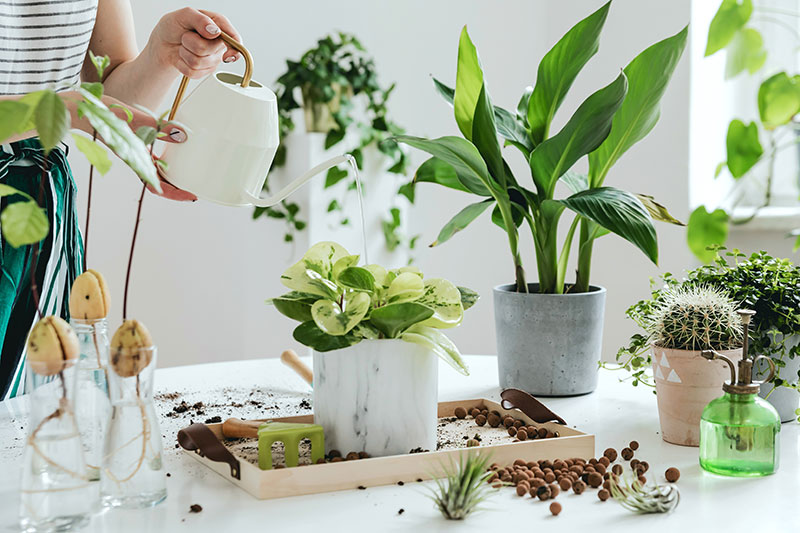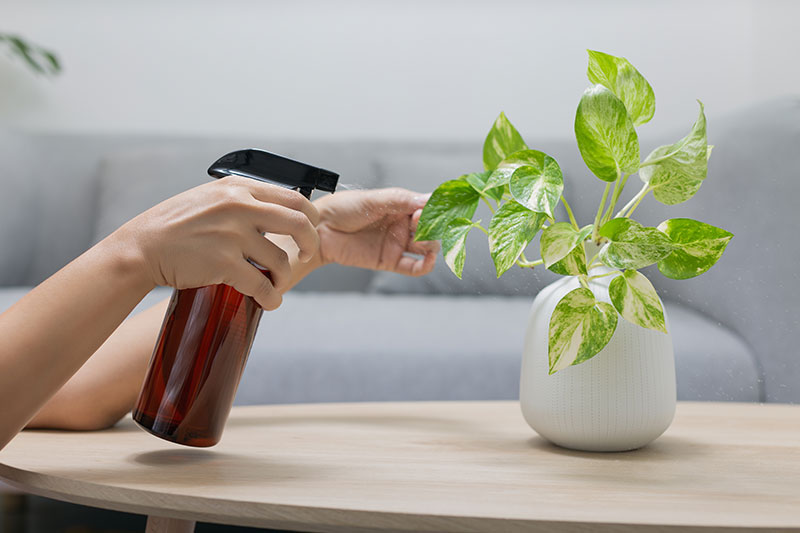Advertisement
If your home has been feeling a little dreary lately, causing your mood to drop, it may be time to spruce it up with some indoor plants. It’s been suggested that filling your house with some natural greenery may benefit you in multiple ways, from improving your general wellbeing to potentially optimizing air quality. Plants can also increase the aesthetic appeal of your living space and offer additional privacy and noise reduction.
If you’re ready to head to the market and pick up your first set of houseplants, you’ll need to understand how to properly care for them. This includes choosing the right plant food, which can be purchased in person or online from a shop like The Plant Runner.
You may think simply sticking plants by the window will do the trick, but while natural light sources are important, remember that indoor plants don’t have access to the same natural matter that outdoor plants do. Therefore, you’ll need to ensure that you provide your plants with the right nutrients to encourage optimal growth.
The benefits of indoor plants
In the United States alone, approximately 33.1 million households did some form of indoor gardening in 2019. This isn’t surprising considering the results of scientific studies aimed at measuring the advantages of doing so. (1)
On study in the Journal of Physiological Anthropology, for example, revealed that the rewards of working around plants included a reduction in stress responses. (2)
It’s also been suggested that indoor plants have a positive impact on those with mental illnesses such as anxiety and dementia, and can help with recovery from illness or surgery. Other research has revealed connections between plants and improved productivity. (3) (4) (5)
How to choose the right indoor plant food:
Encourage their natural food-making abilities
There’s no point spending money on quality plant food if you’re not properly caring for your plants in other ways. For instance, you could be depriving your little green friends of the energy that they need to survive.

Plants draw nourishment from natural light, a process known as “photosynthesis.” In simple terms, plants capture light and convert the carbon dioxide (CO2) into carbohydrates and oxygen. This process is vital for healthy growth. (6) (7)
Because of this, you need to ensure that your plants receive enough light each day.
Understand the different types of fertilizer
You’ll also need to determine the right fertilizer or indoor plant food for your new green house guests.
Here are the different types you might consider:
- Liquid
One of the main perks of liquid fertilizers is the frequency-control you have. You can simply add it to your watering supply whenever needed.
Some formulas are to be used only once or twice a month, while others can be applied more consistently. It’s important to assess your plant’s specific requirements in order to adjust the quantity and frequency correctly. (8) (9) (10)
- Slow-release
If you have smaller-sized plants, slow-release fertilizers—available as pods, pellets, capsules, and spikes—may be the best option for you. Their time-release coated shells slowly disperse into the soil and can last up to nine months.
This option may be perfect for forgetful individuals. You can simply insert the fertilizer and rest easy knowing that your plants are receiving what they need. (8) (9) (10)
- Granular
Granular fertilizer (dry pellets) is mixed straight into the soil and is therefore easier to apply during the initial potting stages. It’s important to note that all of the nutrients get released once water is added. This can prove tricky as you may not be able to determine the strength or amount of nutrients. While cheaper, granular fertilizer isn’t highly-recommended for indoor plants.
(8) (9) (10)
Decide between organic and synthetic
If you’re environmentally-minded, you may prefer to buy organic products over synthetic ones. You can even make your own.
Organic fertilizers are chemical-free, can promote healthy microbial activity within the soil and also work in a gentler way. Using organic fertilizers also makes it difficult to over-feed your plants, which can cause root burn. Plus, there are organic versions of all of the types of fertilizer mentioned above. (6) (11) (12)
Read labels
Reading labels is a crucial step in choosing not only the right type of fertilizer, but confirming it contains the correct amount of nutrients your plant requires. Depending on your plant’s needs, you may require a stronger or gentler fertilizer. This will usually be outlined in the instructions, so make sure to read carefully before buying.
You may also need to buy something plant-specific, especially if you have flowering plants, like orchids, that are in bloom. (13)
Reviews and recommendations
Another tip is to seek out recommendations and reviews. It’s important to remember that a certain amount of responsibility is on the plant-owner, so what hasn’t worked for one person may work for you. However, as a general guide a more popular fertilizer may indeed be better.
Final thoughts
Feeding your plants properly is an essential element of caring for them, which will help keep your living space vibrant and healthy. It’s wise to weigh the pros and cons of each fertilizer and then balance those with your plant’s individual needs.
References:
- “Indoor houseplant gardening participation in the United States from 2010 to 2019”, Source: https://www.statista.com/statistics/716535/us-houseplants-participation/
- “Interaction with indoor plants may reduce psychological and physiological stress by suppressing autonomic nervous system activity in young adults: a randomized crossover study”, Source: https://www.ncbi.nlm.nih.gov/pmc/articles/PMC4419447/
- “Horticultural therapy in a psychiatric in-patient setting”, Source: https://www.ncbi.nlm.nih.gov/pmc/articles/PMC5663021/
- “Health Benefits of Gardens in Hospitals”, Source: https://www.researchgate.net/publication/252307449_Health_Benefits_of_Gardens_in_Hospitals
- “A Hobby for All Seasons: 7 Science-Backed Benefits of Indoor Plants”, Source: https://www.healthline.com/health/healthy-home-guide/benefits-of-indoor-plants
- “Plant Care: Fertilizer”, Source: https://www.thesill.com/blogs/care-miscellaneous/plant-care-fertilizer
- “How do plants feed?”, Source: https://guernseydonkey.com/how-do-plants-feed/
- “The Best Fertilizer For Indoor Houseplants Growing Beautiful, Vibrant”, Source: https://gardenhelpful.com/best-fertilizer-for-indoor-plants/
- “Houseplant fertilizer basics: How and when to feed houseplants”, Source: https://savvygardening.com/houseplant-fertilizer/
- “Fertilizing Houseplants”, Source: https://www.thespruce.com/how-to-fertilize-houseplants-1902846
- “The Best Fertilizers for All Types of Plants, According to Experts”, Source: https://nymag.com/strategist/article/best-fertilizers-for-houseplants.html
- “Houseplant Fertilizers: The Best Indoor Plant Fertilizers (Reviewed and Compared)”, Source: https://leafyplace.com/houseplant-fertilizer-indoor-plant-fertilizers/
- “The Ultimate Guide to Indoor Plants”, Source: https://www.ambius.com/blog/the-ultimate-guide-to-indoor-plants/

